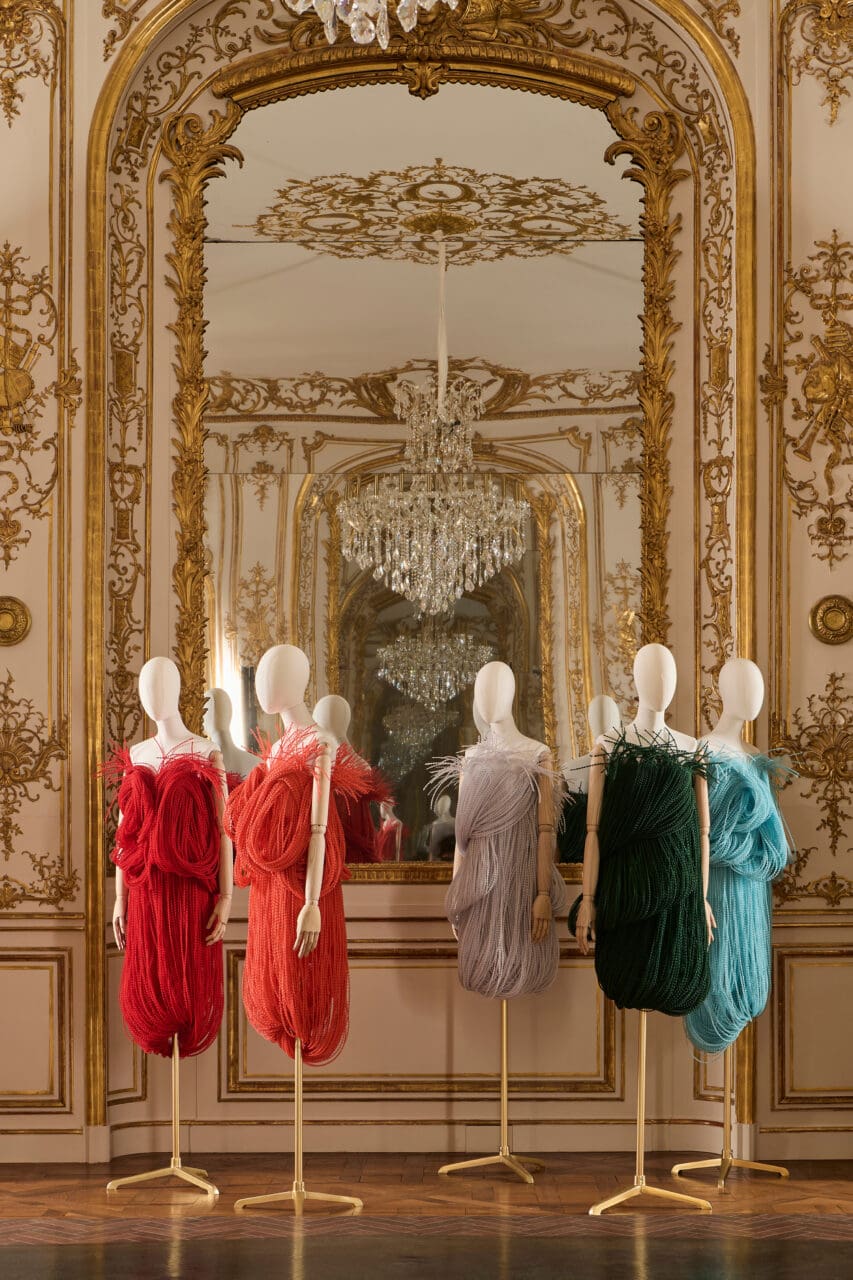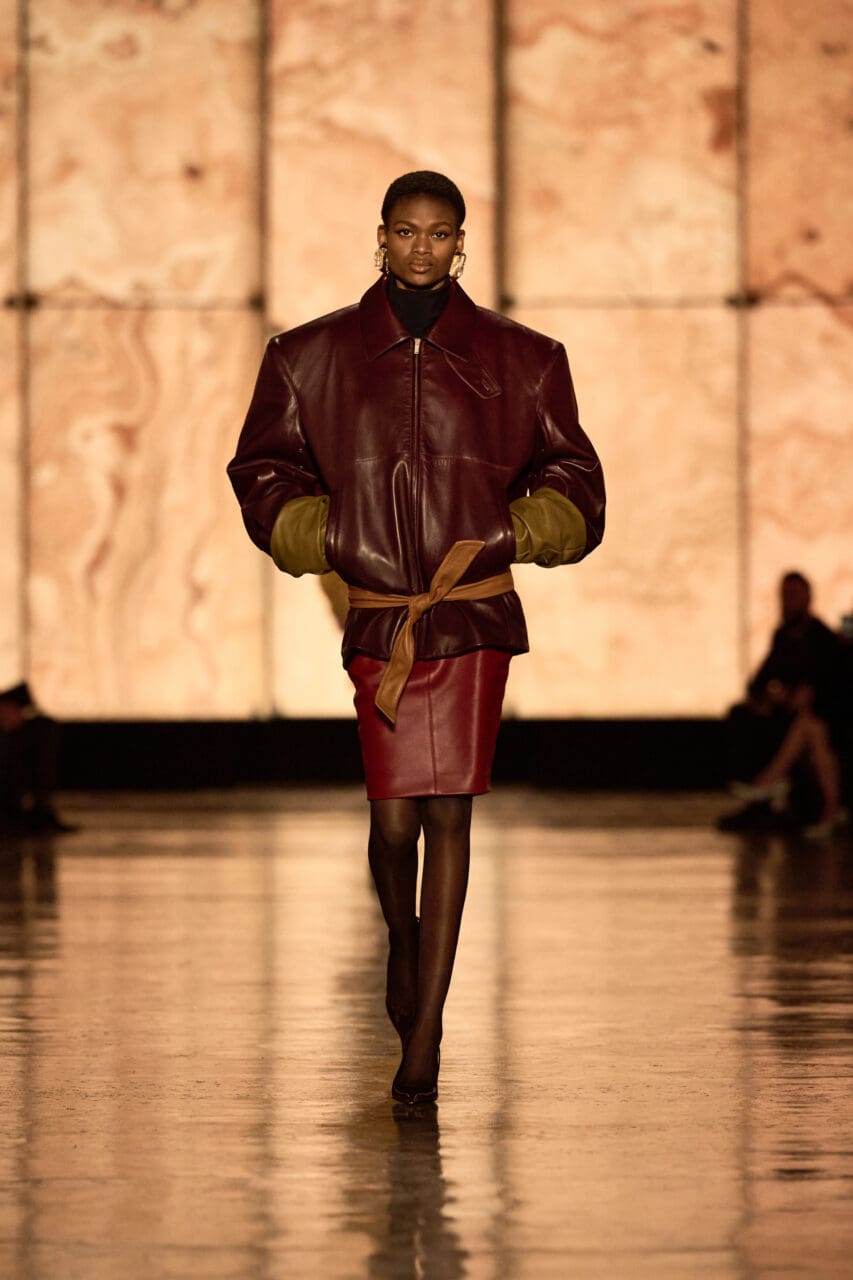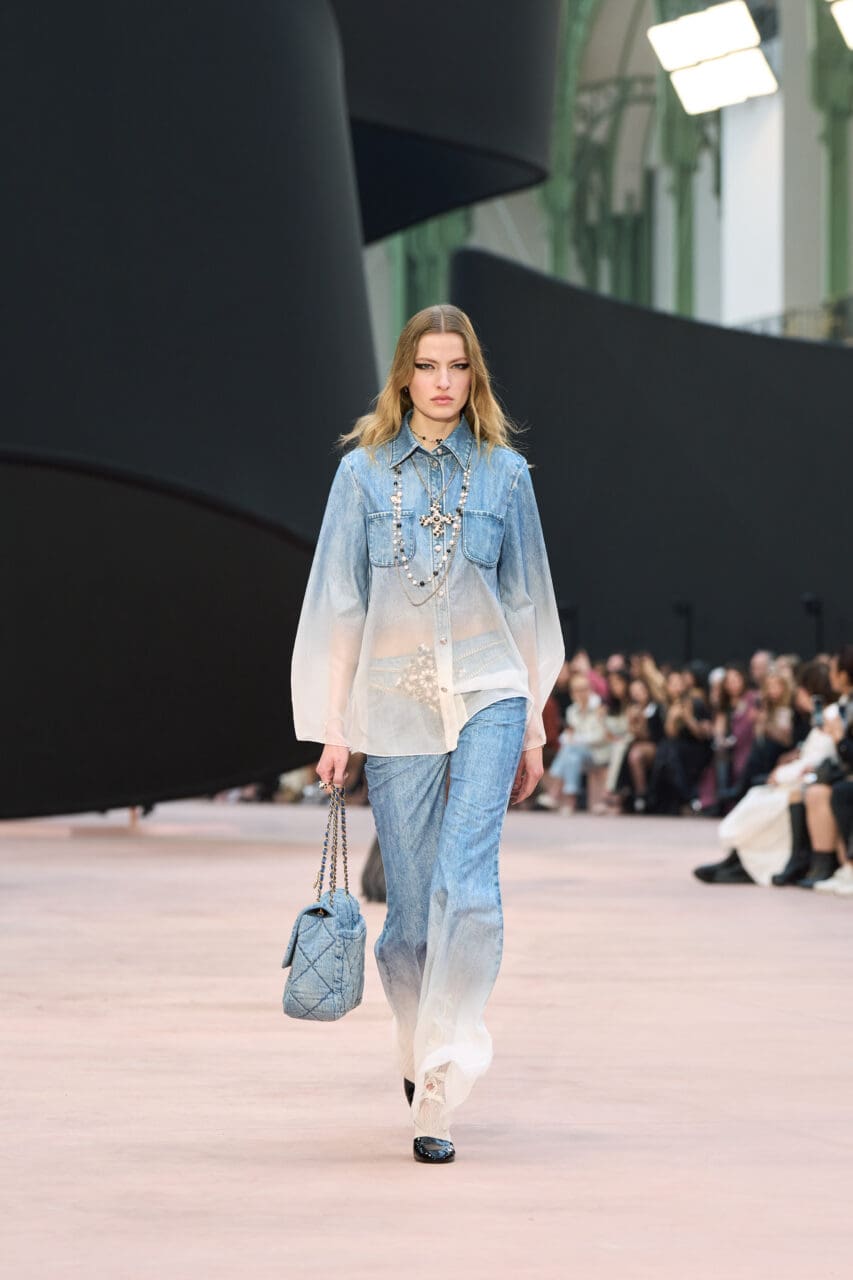Dries Van Noten held his first ever Paris runway show back in 1991. Tonight he presented his last. Although he will continue to advise the design teams from afar, Van Noten, 66, is stepping down from the day-to-day creative direction of his eponymous brand in order to enjoy a fresh phase of life.
While preparing to cover this evening’s much-anticipated show on Vogue Runway, we compared notes and shared reminiscences about Van Noten experiences from the past. We concluded that following his collections has been like enjoying a long-ongoing and brilliant conversation with a fascinating friend. This friend’s essential personality has remained consistent and true, yet he is always also pushing to inject something new and unexpected into the dialogue.
That’s because although he’s always been known for the wearability of his clothes, Dries has nonetheless been one of the most experimental of designers when it comes to the runway. Which is why we decided for this final Vogue Runway Dries Van Noten review we would conduct an experiment of our own—a review through conversation.
Nicole Phelps: I can’t remember a situation comparable to this. Many designers have been forced out of their positions. Others have left at their peak—think of Helmut Lang and Martin Margiela. But for a designer founder to choose to walk away and to share the news before a show rather than after—it’s special. A last goodbye.
Luke Leitch: He’s designed his own departure: how elegant is that?
NP: Very. I suppose it comes down to having worked as an independent designer for as long as he did—over 30 years before selling a majority stake to Puig. Doing things when you want to do them, how you want to do them. I’m happy for Dries and his garden, but it’s definitely a loss for fashion. We need more designers thinking and working on a human scale, like he always has, not more brands selling logo T-shirts.
LL: There was a lot of solidarity shown from the community of designers. So many showed up tonight. In no particular order I saw Thom Browne, Pierpaolo Piccioli, Diane von Furstenberg, Glenn Martens, Walter Van Beirendonck, Veronique Nichanian, Neil Barrett, Alexandre Mattiussi, Harris Reed, Filip Arickx Maria Cornejo, Haider Ackermann…
NP: Don’t forget Ann Demeulemeester!
LL: And I bet there were more we didn’t spot too: it was crowded! When we got to the venue—which was the same factory Dries used for his 50th show back in 2004—Dries himself was in the room, meeting and greeting, as video from past shows was shown on a huge square of screens. It was a fashion reunion. One person I chatted with was Glenn Martens; he said: “To me, what Dries does has never gotten old. He’s been doing it for so long, and yet it still looks as fresh as when he first did it.”
NP: That was obvious from the fabulous looking crowd, and the many people who turned up in their favorite vintage Dries pieces. And it definitely came across in tonight’s collection. When the curtains finally parted and we saw the silver leaf runway I was immediately reminded of his fall 2006 ready-to-wear show, which had a gold leaf runway—it happens to be the first season of his that I reviewed. (I was so green!) But even though there were other nods to the past, including a Japanese printing technique that he said was over 1,000 years old, Dries was really committed to innovation here, experimenting with unlikely fabrics like brushed wool fused to neoprene or a crinkled polyamide that he likened to glass. “I didn’t want to make old clothes, and things which are looking old,” he told us backstage. “But you have the transparent tops which sometimes catch some memories, and that for me was important.” Time and how to think about it was very much the subject of this show, right?
LL: “Catching memories” is at the heart of it. In the same way the silver runway sent you back to a past Dries moment, the gold embroideries on the blue tailored pieces near the front of the show snagged at my memory of the fall 2016 menswear show. During the first section of tonight’s show we heard an edit of David Bowie from the Moonage Daydream soundtrack, in which he says: “Time: one of the most complex expressions. Memory made manifest.” This collection was so carefully shaped to unfold in a very gradual and deliberate manner: those classic yet slouchy tailoring shapes with hints of transparency and shine here and there were great examples of this designer’s ability to explore territory that is “old fashioned” and make you see the view differently. I also think this type of menswear often sparks the manifestation of a sort of subconscious nostalgia…
NP: That’s an interesting idea, subconscious nostalgia, I was actually surprised by how not melancholy I felt afterwards. Which is why I want to go back to those floral prints. Because of the way the suminagashi technique works, they are printed on the front of the garments and plain on the back—at least that’s what I understood from the explanation backstage. But even if I got it wrong, I think they’re just the perfect metaphor for what comes next for Dries. He’s walking away, yes, but to do something else that he loves. I found those pieces not just beautiful, but so positive and optimistic.
LL: Yes, they were gorgeous florals—and yes, the show really did feel more like an affirmation than a farewell. As the gargantuan disco ball that was revealed as Dries took his last bow signaled, this was a celebration. That’s why I was pretty happy when we got to look 30 or so and the color began kicking in. Dries said he didn’t want to design a “best of,” but I would have felt a little maudlin if there hadn’t been one final burst of fireworks. The transition across shiny ripe purples, that incredible pink silk overcoat, the apricot mohairs, and pistachio lurex… this was Dries in full bloom, even before the flower section started!
NP: Another thing I appreciated was the casting. I don’t go to men’s shows often and here in Paris today I was struck by the extreme youth of the male models, they’re not much more than boys. Dries had a range of ages, but sending out the older guy—I think he’s what you’d call a silver fox—at the start felt powerful and pointed, especially as Dries starts a new chapter. So, what spoke to you the loudest, what do you think the collection’s hits are? For me, the blazer at the end that flashed silver or gold depending on the lighting and how you looked at it is a trophy—future vintage, for sure. (Side note: I loved seeing people scoop up silver leaf mementos on the way out. I know I’ll be keeping mine.)
LL: Remember when he released the letter announcing his retirement from the runway, and the price of vintage pieces went up like Bitcoin in its pomp? I think a lot of this collection will be desired as a sort of souvenir, and the pieces that will be especially wanted are the most recognizable: so the prints. I do love the white on white silk baroque patterned jacket with a yolky-yellow dyed edging that looks a little like a faded manuscript. And the satin-pocketed black overcoat that dominates Dries Van Noten’s last-ever runway look: that, for sure, is something to have. The cast ranged from youngsters to models who walked for Dries back in the 1990s, including your silver fox, Nicole! And as well as men it featured plenty of women. So I reckon that when it comes to the stores, women will want to buy into this collection just as much—which is something Dries talked about a little when we saw him backstage: “it’s all one big happy world, and everybody can wear whatever they want.”
Editor
Nicola Phelps & Luke LeitchCredit
Lead image: Daniele Oberrauch / Gorunway.com





